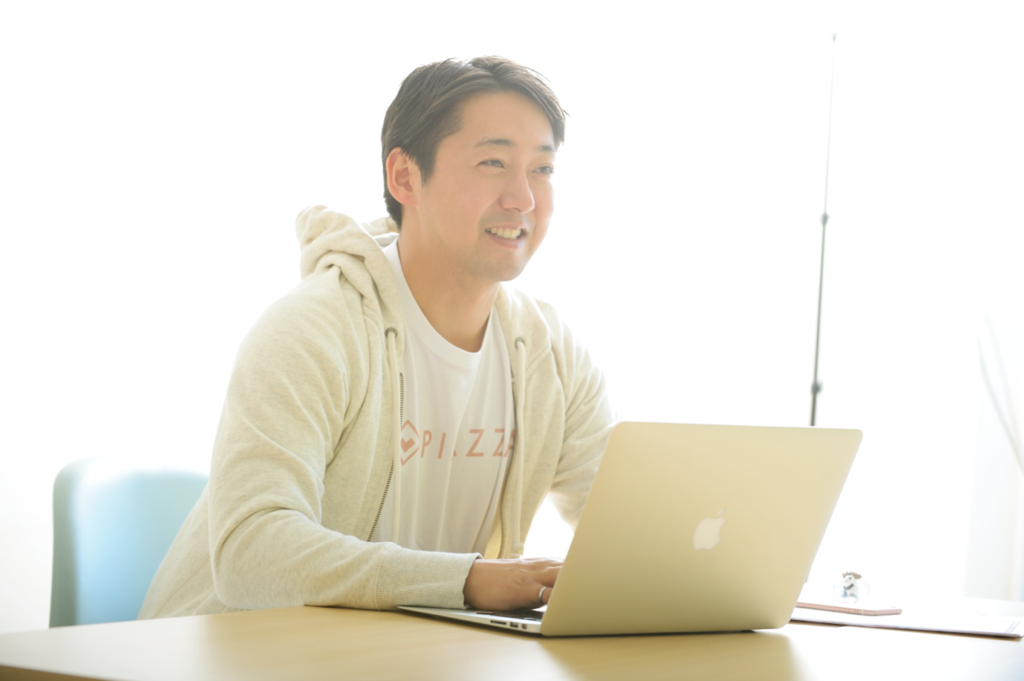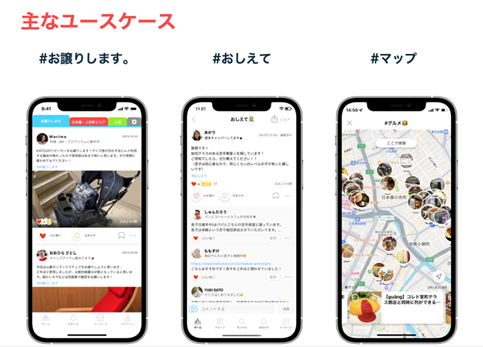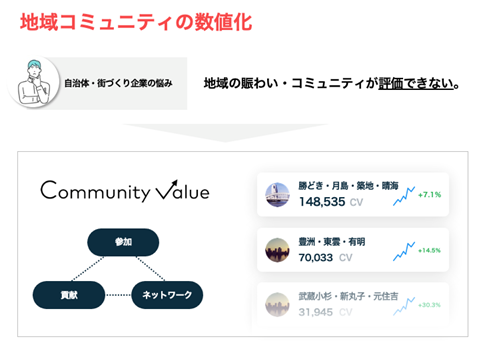Kohei Yano, Representative Director and CEO of PIAZZA, Inc.
We interviewed Kohei Yano, the CEO of PIAZZA, Inc., who was once helped by a neighbor. The neighbor kindly talked to him when he was physically and emotionally overwhelmed by nursing, childcare, and work after his child’s accident. This experience inspired him to create the local community app PIAZZA.
―Could you describe your local community app PIAZZA?

Representative Director and CEO of PIAZZA, Inc.
It’s a digital city’s square. About 70% of our users are in their 30’s and 40’s, so our main users are members of active families. The app first spread among mothers with children aged zero to about three, who needed local information and help the most.
When my child had an accident, a neighbor who I didn’t even know the name of was worried about it and kindly talked to me. This made me wonder why I didn’t know about the area and neighborhood I lived in even though IT was so advanced. I then came up with the app as a modern way to solve this problem. The number of male and senior users is also increasing due in part to the impact of the COVID-19.
―How is the app used?

For example, a PIAZZA user once posted on the app that their bike had been stolen, and another user in the neighborhood solved the problem by finding the bike. The app facilitates hyperlocal communication, which doesn’t easily occur on other social medias.
Especially in the past year, we’ve seen an increase in the number of “buy & sell posts.” People seem to want to use our local community app to give away things that are hard for them to do so on platforms like Mercari , such as strollers, furniture, medaka, and outgrown diapers.
According to surveys (*1), although as many as 85% of people answered that it was ideal to have strong relationships with neighbors, only 6% had four or more neighbors who mutually support each other. Honestly, I myself don’t even have as many as four either.
―And so a gap calls for a need. I see.
In addition to residents’ concerns, there are other important issues to be addressed, such as strengthening civic autonomy and promoting the digital transformation of government given the decrease in neighborhood association participation and a decline in tax revenue due to declining population.
When it comes to local stores, the pandemic has led them to shift from offline connections to online connections with the local community and to place more importance on the local commercial area due to the loss of inbound travel. This is a great trend, and local stores need more effective public relations media following flyers, which up until then had been the main advertising media.
―What are the odds of your business succeeding?
In the United States, there is Nextdoor, an operator of a local social media with 60 million registered users and used by one-third of households. The company earned sales of $200 million according to its most recent financial reports. The company’s valuation is about $2 billion due to a current decline in stock prices, but when the company went public last year, the capital market saw it as worth about $4 billion.
Also, Nextdoor’s average revenue per user (ARPU), obtained by dividing sales for its most recent quarter by the number of weekly active users, is 181 yen, while our ARPU is 1,479 yen.
The local advertising market in Japan is about 900 billion yen in size, including flyer, direct mail, traffic advertising, and free papers. This is an area where there’s still a lot of room for digital transformation and thus a lot of business potential.
―How do you monetize your business?
We sell “sponsor accounts” with specialized functions. Monthly fees for a sponsor account are 30,000 yen, and an optional plan is available with extra fees.
In a nutshell, this is to build digital customer bases in local commercial areas. In one case, a long-established sushi restaurant in Nihonbashi, Tokyo, whose daily sales had fallen to 10,000 yen due to the pandemic, sent out take-out information via PIAZZA and then was visited by families in the neighborhood. Its daily sales jumped to 400,000-500,000 yen.
I think it’s a big deal and a good sign that stores like sushi restaurants have started using PIAZZA. Other big customers include companies in the real estate, beauty, and learning sectors as well as commercial facilities.
―Which areas are you operating in?
We are operating in 80 areas, most of which are in Tokyo, Kanagawa, Nagoya, and Osaka, and are aiming to expand to 200 areas in the next one or two years. In Chuo-ku, Tokyo, where 30% of people in their 30’s and 40’s are registered on our app, the response rate to “Q&A” posts was 95% last month and the time spent per user increased by 1.7 times during the period. It’s becoming a community with more users and higher engagement.
―How is your external collaboration?
We are in partnership with about 50 local governments, and our app has also spread to nursery schools and kindergartens. Although local social media for administration are difficult to operate, PIAZZA allows governments to leave the management to us and to digitize public relations.
Twitter, Facebook, and LINE accounts are often owned by groups such as ward offices, children’s centers, and kindergartens and tend to provide mass information. PIAZZA allows users to deliver more detailed information at the local level.
In addition to live information, such as the number of participants in an event, PIAZZA allows users to view time series data and relative comparisons with other cities to quantitatively evaluate their community structure and to exhibit the superiority of our measurement systems.
―What about collaboration with other business operators?
We work with railway and real estate operators and hire local neighbors called “community designers.” For instance, we are creating places where people will gather and children can play in Nihonbashi with Mitsui Fudosan and in Kachidoki with Tokyo Tatemono. We plan to increase these facilities in the future.
―What are the factors that have kept the collaboration on track?
One thing we do is visualize communities by creating a quantitative indicator from user graph data. However, since our key value is to put communities first and we believe that value can be created only after communication takes place, we do not include the number of users as an element.
We calculate community value using multiples obtained by dividing absolute numeric values by the number of users. As the number of users grows, the average drops, but we know the normal average of multiples for a community of a certain size.
These indicators are not disclosed to general users at this point, but we hope to make them public in the future. Community value is the aggregation of the number of connections as well as the degree of communication and it belongs to users.
―People may also expect land prices to rise as community value increases. To end off, could you tell us about your vision for the future?

We’d like to create a “super app” for local communities that will serve as a future service infrastructure. We’ve made the app’s API public, adopted a point system for payment, and started a beta version of a system that allows users to order housekeeping and car sharing from the app. This project is also in partnership with Mitsui Fudosan. We are targeting a market of around 2.7 trillion yen, including the flyer-oriented local advertising market and the local e-commerce market. We hope to become a platform that enable us to approach this market directly.
In the future, the value of a community will be defined more in terms of intangible assets than of tangible assets. Populations in Japan become shrinking more and more., and people communicate online one another and can have anything delivered right to their home. With this in mind, we need to focus not only on increasing the value of tangible assets, but also promote a strong focus on the valuable intangibilities within a community. This, I believe, will be characteristic of future community development. PIAZZA’s big vision is to be a next-generation community developer that plays the role of developing intangible assets for communities.
*1. Source: Cabinet Office “National Survey on Lifestyle Preferences” and Mitsubishi Research Institute “Questionnaire on Social Security”
| Company name:PIAZZA, Inc. |
| Founded:May 2015 |
| Number of employees:20 |
| Main businesses:Planning and operation of the digital community app, area management, local marketing support, and local business support URL:https://www.about.piazza-life.com |
This article is part of a series of articles introducing venture companies working together as ICF members to resolve societal issues.





